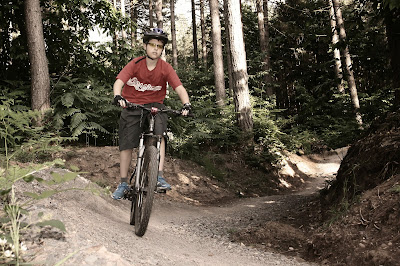Having thought about what may make good black and white photography subjects, I walked around my local nature reserve looking at the structure of objects such as telegraph poles and wires, texture of plants such as bulrushes (following an internet search I discovered they are also known as reed mace and cat tails) and contrast of objects such as berries / seed heads against a background.
I have previously converted photos into black and white from colour in Photoshop, so decided to see what happened if I set the camera to monochrome. It was good to review the image in the view finder in black and white because I could see instantly what had potential and what didn’t work or would require more work.
 |
| 1/350 F4.4 ISO200 40mm |
This pipe drains water from the nature reserve into a small pond. Normally I would not give it much time, but thought it could look different in black and white.
When I uploaded the image to Photoshop, the JPEG looked as taken in monochrome, but the RAW image was distorted in colour. The greens were not as I remembered them to be and the pipe looked a blue/grey colour. I had not expected this to happen. Having converted the RAW to grayscale, I was unable to alter the colour temperature, although the sliders did affect the look of the image. I could not change much of the image using the colour sliders, so I used the JPEG version and applied the Silver Efex plug in software to it. Choosing the “architecture” increased the contrast and brought out more detail in the structure and surrounding concrete. I have since noted that I can apply the Silver Efex software and change the sliders.
I studied the zone system of exposure for the last assignment and can see that it works when applied to black and white photography. Underexposure worked better in some images. Framing is important because in some images I experimented with, the subject was lost in the clutter of grass and weeds. Simplicity was needed to reveal the structure or plant / seed head to be viewed. Good contrast was necessary to make certain subjects stand out; e.g. black berries against pale leaves stood out, whereas some autumnal leaves against a blue sky actually looked better in colour than black and white as there was little contrast.
Researching my local library around the subject of black and white photography, I found a useful chapter on Silver efex pro which worked through processing with this add on to Photoshop in more detail.
 Having read Beardsworth's chapter on Silver efex pro, I experimented using his method of applying silver efex as a smart filter which I had not used previously, which allows one to open the layer and return to any changes which have already been made without starting from scratch. I worked my way through the described workflow to see what effects could be made as I have only applied filters in the past. By using the selective adjustments control points, I was able to darken the stone in the left hand bottom corner which took the focal point away from this and into the pipe.
Having read Beardsworth's chapter on Silver efex pro, I experimented using his method of applying silver efex as a smart filter which I had not used previously, which allows one to open the layer and return to any changes which have already been made without starting from scratch. I worked my way through the described workflow to see what effects could be made as I have only applied filters in the past. By using the selective adjustments control points, I was able to darken the stone in the left hand bottom corner which took the focal point away from this and into the pipe.
Bibliography
Advanced digital black and white photography, Beardsworth.J, 2012, Ilex press, Lewes, UK p82-89
The complete guide to black and white digital photography, Freeman.M, 2009, Ilex press, Lewes, UK







